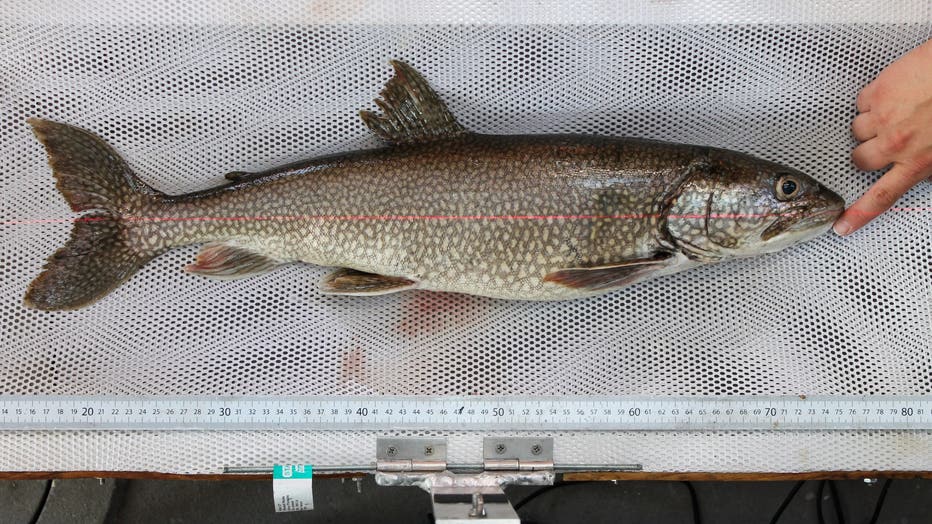Lake Superior lake trout caught during a survey of Caribou Island in Canadian waters.
(FOX 2) – In 2023, a group of wildlife officials were performing a survey at the reefs of a remote island in the middle of Lake Superior. They were studying a special group of trout that live in the reefs around Caribous Island.
One fish they caught appeared unremarkable at first. It weighed 4.6 pounds and measured just over two feet. Neither trait matched the record sizes recorded by the Michigan Department of Natural Resources.
But there was something exceptional about this catch: it’s the oldest lake trout ever found in the Great Lakes.
Big picture view:
The DNR said the fish was found in a remote offshore area near the Canadian border, 40 miles north of Grand Marais in Michigan’s Upper Peninsula.
Named “Mary Catherine,” the trout hatched in 1961. According to wildlife officials, she is 62 years old.
While lake trout can live for decades, the discovery of a fish this old is unusual. Beyond the rapidly changing environment of Lake Superior, competition and overfishing means the typical lake trout lifespan is about 25–30 years.
Prior to Mary Catherine’s discovery, the oldest lake trout found in the region was 42 years old – reported by the Wisconsin Department of Natural Resources more than 27 years ago.

: The oldest lake trout yet discovered in Lake Superior, also known as “Mary Catherine.” Photo via DNR.
How do you age fish?
How does one measure the age of a fish? It’s a little similar to estimating the age of a tree – by counting the number of specific rings.
Various parts of the body can give hints at how old the organism is, including its spine. In lake trout, a tiny piece of calcium that lives in the inner ear of the fish is the best way to guess.
The scientific term is an otolith and as the fish grows, so does this ear stone. Every winter, another ring forms on the otolith. Mary Catherine’s otolith had 62 rings.
Otolith from “Mary Catherine,” showing 62 years of growth. Photo via Michigan DNR.
Dig deeper:
The partnership of DNR, U.S. Fish and Wildlife, and university researchers from Wisconsin-Milwaukee and Purdue were conducting a survey of the Caribou Island Reef complex, which lies in Canadian waters.
Scientists were performing studies on the trout subspecies in the Klondike Reef area of the complex. They wanted to better understand the history and biology of this subgroup of lake trout.
More specifically, the partnership hoped to get a better idea of humper lake trout reproductive biology. The study will help fishery managers more effectively stock the fish, the DNR said in a news release.
Because Lake Superior has fewer nutrients in the water, the species that call the water body home have adapted to living in unproductive ecosystems. This means fish native to Lake Superior take a longer time to grow, which is why they generally live longer.
This also means when the fish are harvested or are presented with a new threat, it takes a longer time for their populations to replace what was lost.
Between commercial fishing and sea lamprey feeding on trout, the Lake Superior population collapsed in the 1950s. It took 70 years and effort across several levels of government to help the fish population improve.
In 2024, a consortium of local, state, and federal agencies between the U.S. and Canada declared Lake Superior lake trout populations rehabilitated.
“This is one of the greatest comeback stories in freshwater fisheries management,” a news release from the DNR said.
The Source: A news release from the Michigan Department of Natural Resources was cited for this story.


